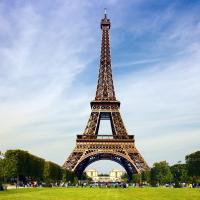From the outset, Debussy was considered a prodigiously talented pianist and composer but also difficult, alternately argumentative and uncommunicative and “unattractive even to his friends”. There are several reports of his being impertinent and challenging to his tutors at the Paris Conservatoire where he studied from the tender age of ten.
Although he alienated many, his formal studies culminated in winning the prestigious Prix de Rome (the same composition prize that had repeatedly eluded Ravel and led Fauré to set off on his campaign of Conservatoire reform). But Debussy did not express the expected gratitude and left Rome early, reacting against Italian opera and finding his time in the Eternal City “stifling” and “abominable”. He was to spurn eventually the giants of Russia and Germany too and assimilate instead a variety of new and exotic influences such as Javanese gamelan music (which he heard at the Paris Exposition Universelle in 1889) into his own style. He later adopted the title ‘musicien français’. He wrote “I am more and more convinced that music, by its very nature, is something that cannot be cast into a traditional and fixed form. It is made up of colours and rhythms. The rest is a lot of humbug…”
Although a constant irritant for Debussy himself, it is easy to see why he was linked to his painter contemporaries, the French Impressionists – the same terminology of sensuality, fluidity of form and skilful and experimental play of light and ‘colour’ certainly applies to the comparatively early but revolutionary Prélude à l’après-midi d’un faune.
The Prelude was composed in 1894, inspired by the Symbolist poet Mallarmé and originally intended to be the first of three pieces, hence the title. Debussy explained, “The music … is a very free illustration of Mallarmé’s beautiful poem. By no means does it claim to be a synthesis of it. Rather, there is a succession of scenes through which pass the desires and dreams of the faun in the heat of the afternoon. Then, tired of pursuing the timorous flight of nymphs and naiads, he succumbs to intoxicating sleep in which he can finally realise his dreams of possession in Universal nature.”
Debussy captures the shimmering heat and eroticism of the faun’s world through a complex organisation of musical cells, with motifs carefully developed and traded between the different instruments of the orchestra.
The Prelude opens, famously, with a sinuous solo flute melody that conjures up all the languor of a summer afternoon. This figure descends chromatically down an augmented fourth, or tritone (an unsettling interval that was branded ‘the devil in music’ during medieval times), before climbing back up – all the while refusing to settle in any tempo, key or tonal centre. Many aspects of Debussy’s characteristic style follow: whole-tone scale runs, brief and dexterous modulations between keys, fluid movement between different time signatures, the use of tritones in both melody and harmony, and his use of the mathematical ratio, the Golden Mean, to structure his work. And, in the first minute of the piece, Debussy mischievously throws in a bar of complete silence.
Only about ten minutes in length and sparingly scored, this seemingly modest piece nevertheless signalled what Pierre Boulez considered the awakening of modern composition: “The flute of the faun brought new breath to the art of music.”
Composer: Debussy Wiki Link: https://en.wikipedia.org/wiki/Pr%C3%A9lude_%C3%A0_l%27apr%C3%A8s-midi_d%27un_fau… Title of Musical Work: Prélude à l’après-midi d’un faune